First of a two part blog on experiments by the US District Courts, in both the Southern and Northern Districts of California, with a type of Alternative Dispute Resolution procedure called Early Neutral Evaluation (ENE).
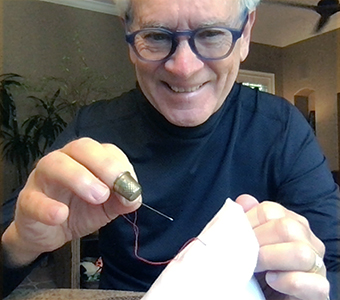
ENE is different than mediation and special mastery assignments, somewhat of a hybrid, but with an emphasis on expert input. The basic idea of ENE can be found in the old adage: A stitch in time saves nine. As applied to ediscovery I have seen many cases where early input of an authoritative discovery expert can be beneficial. If the expert input is provided very early, and if it is followed, it can save the parties both time and money. But can a timely expert stitch really save 90% as the adage suggests?
Common wisdom aside, a ninety percent savings is incredibly high and likely impossible to attain in all but a few cases. Still, in all cases, based on my experience, early expert input can save the parties substantial time and money. Maybe a ninety percent savings is possible in some rare, big cases, where the expert is good and carries a big stick. One has only to think of the savings possible from one expert suggestion, the use of AI instead of armies of attorneys doing linear review. Maybe an overall 90% savings could be reached in a case like that. What is important is that ENE should result in savings, far more than the cost of the exercise, in almost very case. Hopefully, the experiments with ENE now going on in California and elsewhere will confirm my experience.
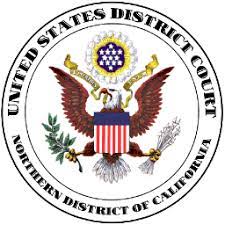
The current ENE procedures in California are shown in McCormack v. Sterling Jewelers Inc., No. 22-cv-00525-AJB-BGS, 2022 U.S. Dist. LEXIS 106345 (S.D. Cal. June 14, 2022). The order granted the parties a continuance of a mandatory ENE Conference, a continuance that Magistrate Judge Bernard G. Skomal referred to as rare and would not to be repeated. After all, one of the main points of ENE is to be early. The stitch can only save nine if done early, and, if done by an expert.
ENE Has Been Around a Long Time
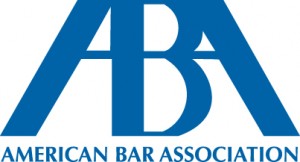
The ABA has nice one paragraph article explaining ENE: Early Neutral Evaluation. Here is how the ABA introduces practitioners to this form of Alternative Dispute Resolution (ADR):
Early neutral evaluation is a process that may take place soon after a case has been filed in court. The case is referred to an expert, usually an attorney, who is asked to provide a balanced and unbiased evaluation of the dispute. The parties either submit written comments or meet in person with the expert. The expert identifies each side’s strengths and weaknesses and provides an evaluation of the likely outcome of a trial. This evaluation can assist the parties in assessing their case and may propel them towards a settlement.
As a practitioner in District Courts since 1980, I personally think ENE is a very good idea. So too did Congress in 1990 when it first enacted the Civil Justice Expense and Delay Reduction Plans Act (CJRA), which included Early Neutral Evaluation as one of many recommended ideas. 28 U.S.C.S. § 473(a)(3), (b)(1) & (b)(4). Ironically, it has taken more that thirty years for this type of early intervention ADR to catch on, but I’m reminded of another old saying I believe in – Better late than never.
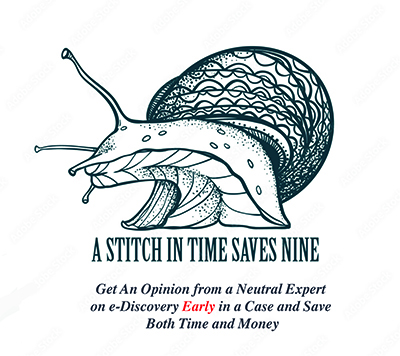
The California District Courts recent ENE rules are an implementation of this initiative to reduce federal litigation expense and delay. This is a longstanding problem. This article provides citations at the end to other federal courts with active Early Neutral Evaluation programs. I urge all attorneys and judges to give ENE a try. It may not save ninety percent in all cases, but, if done with a good expert, it should certainly help effectuate the goals of Rule 1, Federal Rules of Civil Procedure.
ENE in the United States District Court for the Northern District of California.
Different forms of the ENE Rule have been adopted by the Southern and Northern Districts in California. This blog article will focus on the much more detailed ENE rule found in the United States District Court for the Northern District of California.

The rule is identified in the Northern District as Local Rule 5 governing Alternative Dispute Resolution, ADR Local Rule 5. Here is the Local Rule’s description.
5-1. Description
In Early Neutral Evaluation (ENE) the parties and their counsel, in a confidential session, make compact presentations of their claims and defenses, including key evidence as developed at that juncture, and receive a non-binding evaluation by an experienced neutral lawyer with subject matter expertise. The Evaluator also helps identify areas of agreement, offers case-planning suggestions and, if requested by the parties, settlement assistance.
The Rule goes on to describe eligibility, which I interpret to mean it is available in any case where at least one party wants it, and may be required anyway, if the judge wants it. Most judges would want any complex cases to try such an early case settlement with the help of an expert neutral. Note the rules requirement as to availability of requisite expert. This shows there is a need for Neutrals with special skills and experience, including technology, to play a role much like that of a special master, but with settlement tasks within the scope of their assignment.
5-2. Eligible Cases
Subject to the availability of administrative resources and of an Evaluator with subject matter expertise, appropriate civil cases may be referred to ENE by order of the assigned Judge following a stipulation by all parties, on motion by a party under Civil L.R. 7, or on the Judge’s initiative.
Here is how the next Rule 5-3 on Evaluators begins. See the full rule for many remaining details.
5-3. Evaluators (a) Appointment. After entry of an order referring a case to ENE, the ADR Unit will appoint from the Court’s panel an Evaluator who has expertise in the subject matter of the lawsuit, is available during the appropriate period and has no apparent conflict of interest. . . .
It is interesting to note that under 5-6, much like situations where special masters are appointed, and unlike mediation appointments, ex parte communications are strictly controlled.
5-6. Ex Parte Contact Prohibited
Except with respect to scheduling matters, there shall be no ex parte communications between parties or counsel and the Evaluator, including private caucuses to discuss settlement, until after the Evaluator has committed his or her evaluation to writing and all parties have agreed that ex parte communications with the Evaluator may occur.
The timing component here is very important. First you get the written opinion, then settlement discussions can begin. The Evaluator has no adjudicatory power, so this is just a peek into how the court itself will probably rule. But this kind of neutral evaluation can often have a very sobering impact onto one or both sides.
At least seven days before the first Early Neutral Evaluation meeting with the Evaluator, the parties have to serve on the Evaluator, and each other, an ENE Statement. ADR ENE Rule 8. These are not to be filed with the court and so would be outside of Pacer and the public disclosure that goes with Pacer. Subsection c. sets out the contents of the ENE Statement. Note its similarity with a typical mediation statement.
(c) Content of Statement. The statements must be concise, may include any information that may be useful to the Evaluator, and must, unless otherwise directed by the Evaluator:
(1) Identify, by name and title or status:
(A) The person(s) with decision-making authority, who, in addition to counsel, will attend the ENE session as representative(s) of the party, and
(B) Persons connected with a party opponent (including an insurer representative) whose presence might substantially improve the utility of the ENE session or the prospects for settlement; Describe briefly the substance of the suit, addressing the party’s views of the key liability issues and damages and discussing the key evidence;
(3) Address whether there are legal or factual issues whose early resolution would reduce significantly the scope of the dispute or contribute to settlement negotiations;
(4) Identify the discovery that is necessary to equip the parties for meaningful settlement negotiations; and
(5) Include copies of documents out of which the suit arose (e.g., contracts), or whose availability would materially advance the purposes of the Evaluation session, (e.g., medical reports or documents by which special damages might be determined).

This is what you would expect and follows typical mediation rules.
As a big believer of the rights of litigants to protect their trade secrets, I was pleased to see Rule “5-9. Special Provisions for Patent, Copyright, or Trademark Cases.” Has what parties need to protect their confidential data.
Rule 5-10 governs attendance at the ENE hearing with the Evaluator. All parties and their counsel are required to appear with a few exceptions allowed. The reason provided in Rule 5-10 for these stringent attendance requirements is instructive:
This requirement reflects the Court’s view that the principal values of ENE include affording litigants opportunities to articulate directly to other parties and a neutral their positions and interests and to hear, first hand, both their opponent’s version of the matters in dispute and a neutral assessment of the merits of the case and the relative strengths of each party’s legal positions.
Again, much like mediation.
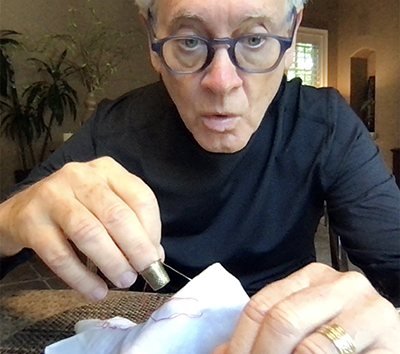
To be continued . . . Part Two of this Blog will examine the Procedures to be followed in an ENE Session, the suggested helpful input of the EDRM’s often overlooked, Metrics Model, ENE and Rule 1, ENE Experiments in Other Courts and, as always, my Conclusion. As a bonus, I’ll also consider the crazy idea of mixed idiots, um, I mean mixed idioms. What happens if a stitch in time reveals a case made out of whole cloth? Surprise! I’ve seen it happen many times and I’m sure you have too.
Ralph Losey Copyright 2022 – ALL RIGHTS RESERVED


